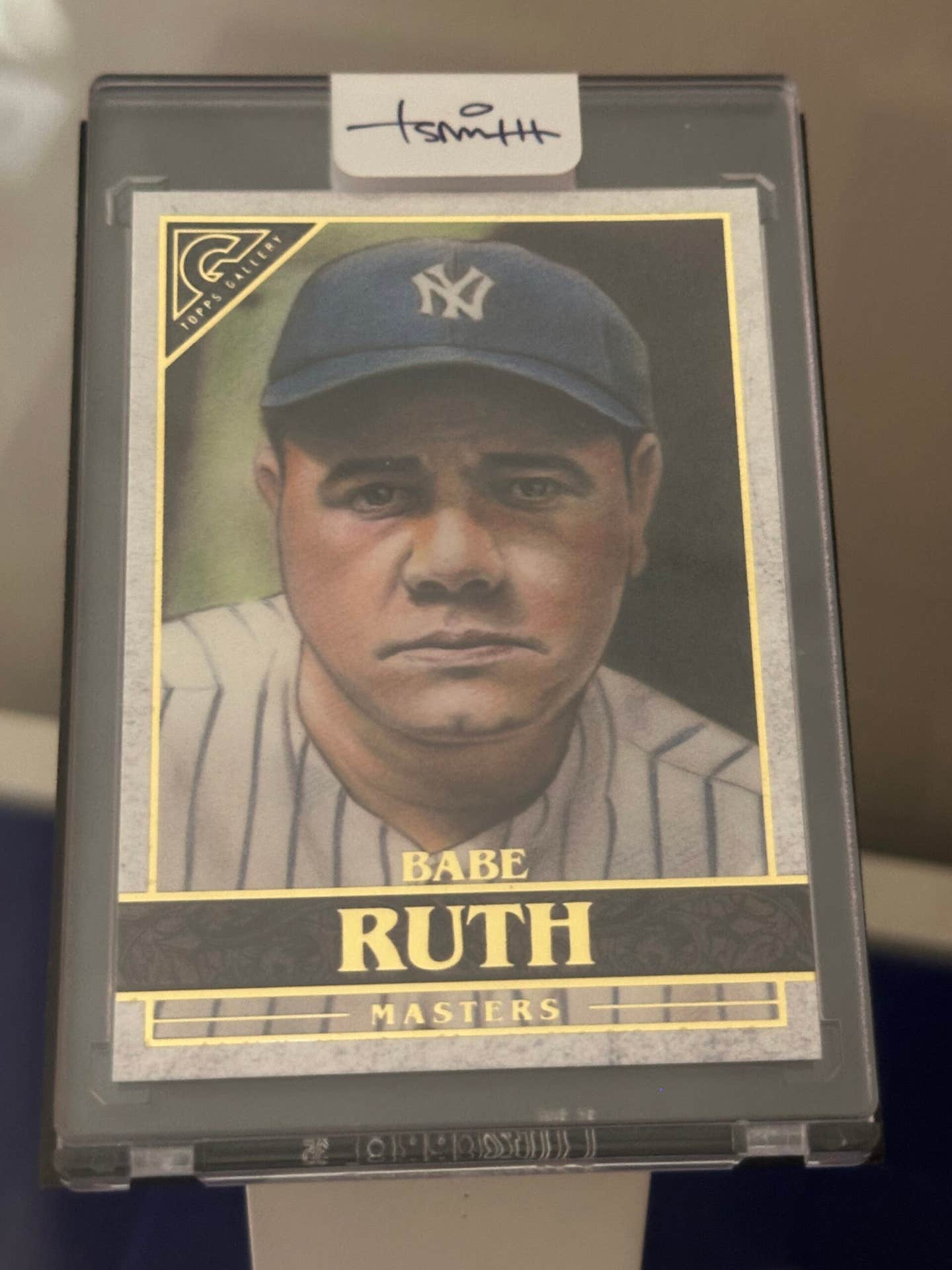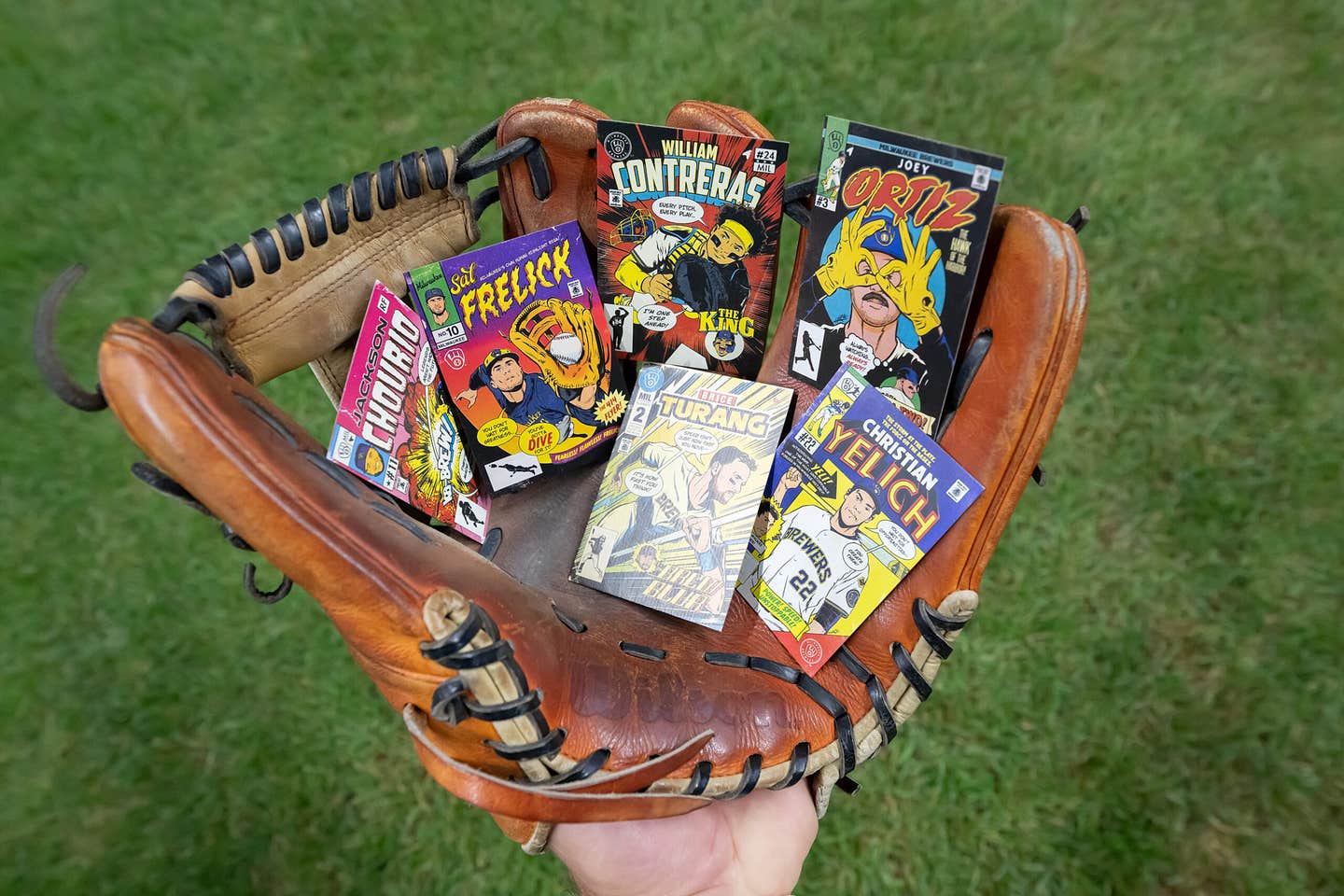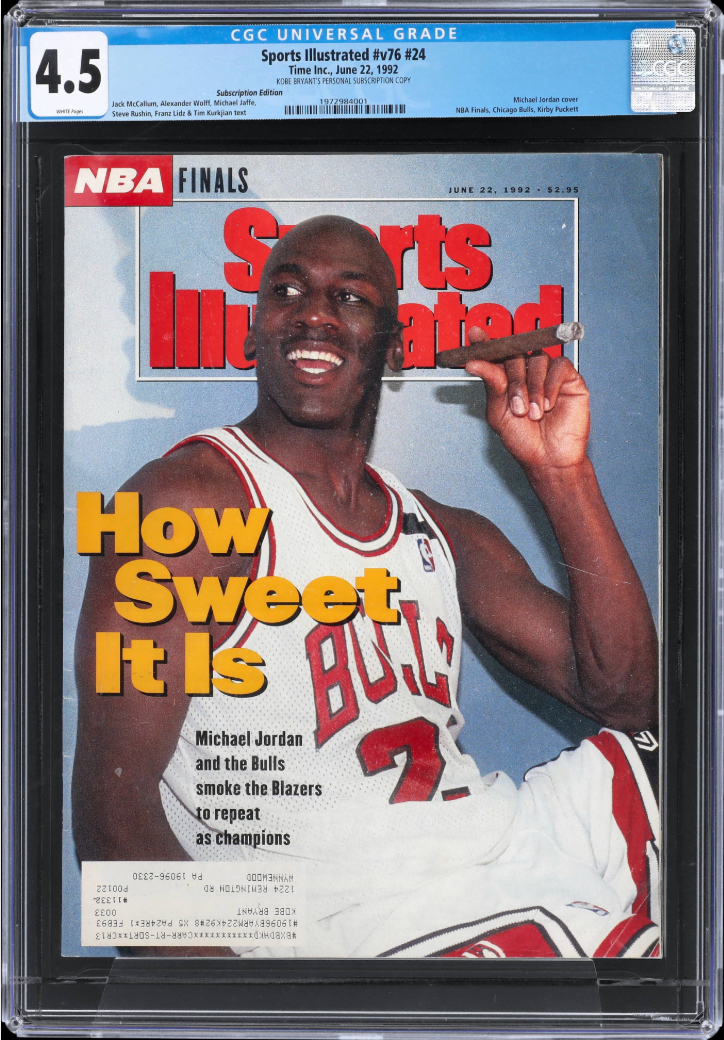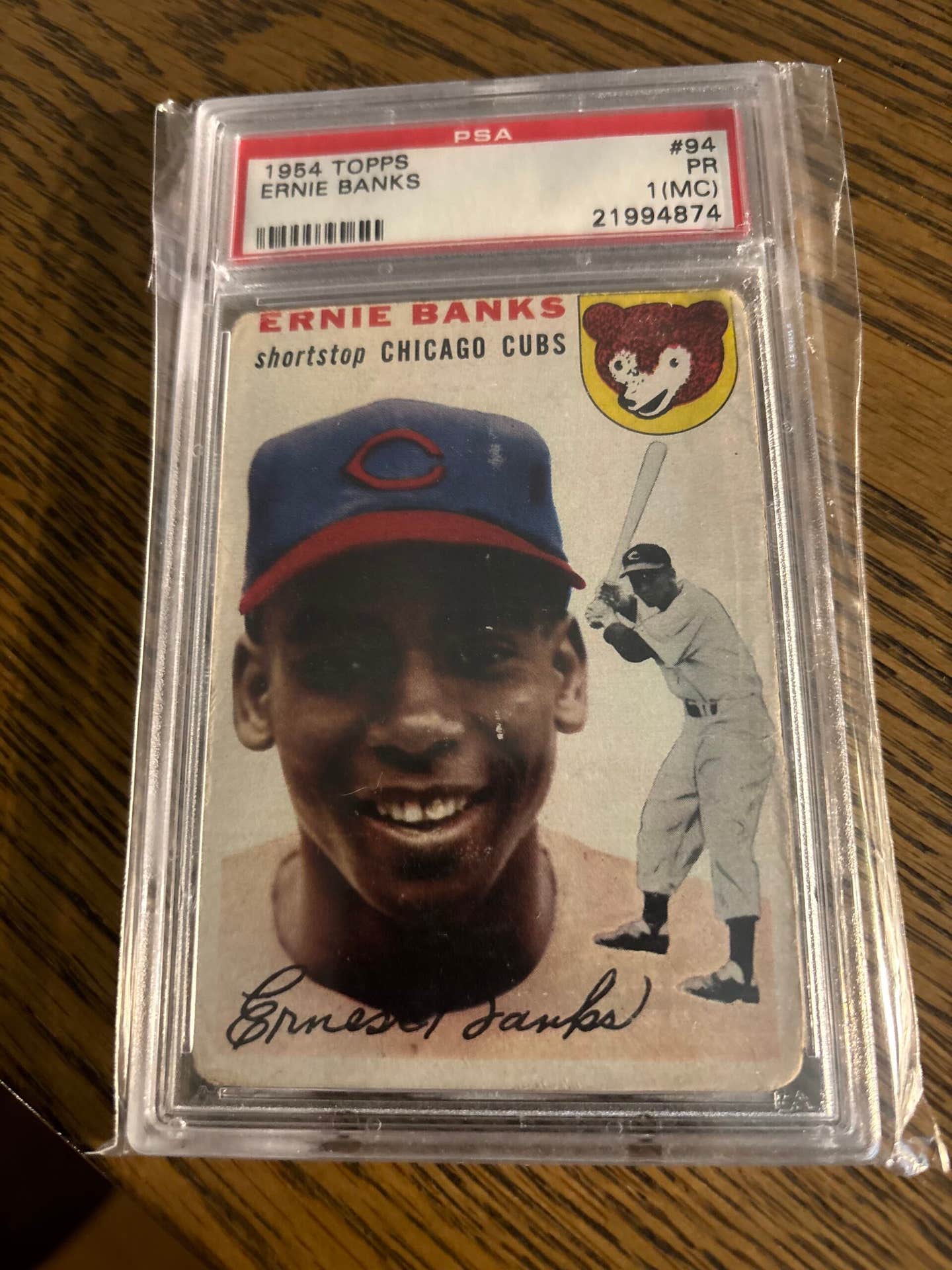Football
Art old and new at the Chicago Sun-Times …
Here are a few odds and ends from the recent Chicago Sun-Times Show that I blogged about briefly the other day.
I saw a wonderful piece (shown here) from famed artist and photographer Robert Riger. It was at Kip Ingle’s table, a stunning drawing of Red Grange, signed by the Galloping Ghost himself. The autograph is great, but I would have been nearly as taken with the piece even had it been sans signature.
I remember being enthralled by Riger’s elegant drawings in Sports Illustrated magazine when I was just a kid; his pencil artistry and Willard Mullin’s pen-and-ink work probably had as much to do with leading me into a real appreciation of black-and-white art as anything else. That and a love for newspapers, and at time when daily newspapers couldn’t afford to routinely run four-color pages.
But the dynamic impact of color can hardly be overstated, and if you don’t believe me, I would point to an artist who was at the Sun-Times displaying dozens of spectacular originals, prints and giclees at his table, all with the sanction of Major League Baseball.
John Prince is a self-taught artist from London, England, and he paints with acrylics, portraying major league stars in an attractive style that presents the player in the foreground with his jersey and team logo as a backdrop.
I’ve pictured a couple of his paintings with my column in this week’s issue (Dec. 25) of Sports Collectors Digest, but unfortunately the pages are black-and-white, and his work needs to be seen in full color.
Easy enough: go to www.sportsartworldwide.com. The prints and giclees are huge, usually about 32-by-24 inches, and his originals are even larger, often 48-by-36 inches, and the impact is extraordinary, which I assume is why MLB signed on to the project.
I asked him how his first foray into the hobby show business had gone, and I already knew just from checking his table several timers during the weekend that there had been a good deal of interest in his work. “Some folks said they wanted to wait a couple of weeks until they got their wage packets,” he said in a cherry British accent. I am pretty sure I couldn’t have said it better myself.
At the other end of the show floor, the group of Negro League Legends that typically appears at the Chicago show was once again there signing autographs and chatting with fans, but this time they had added something new for sale.
Triumph Books, the publishers of Few and Chosen: Defining Negro League Greatness, dontated three dozen of the books to the group as a fundraiser. That would have been cool enough, but Triumph also got the books signed by authors Monte Irvin and Phil Pepe, with the Negro League Legends adding their own signatures as requested (www.negroleaguelegends.org).
This is Baseball Hall of Famer Monte Irvin's assessment of the greatest players from the old Negro leagues, and that's an extraordinarily worthwhile undertaking, given that modern fans have such a minimal understanding of the great players who were denied the opportunity to play at the major league level. Since statistical evidence remains so sketchy in trying to get a clear picture of these largely overlooked giants, the contribution from one of the few remaining Negro leaguers (Irvin) seems welcome indeed.
Note I don't refer to him with the common yet redundant "former" qualifier, since there are no current Negro leaguers.








